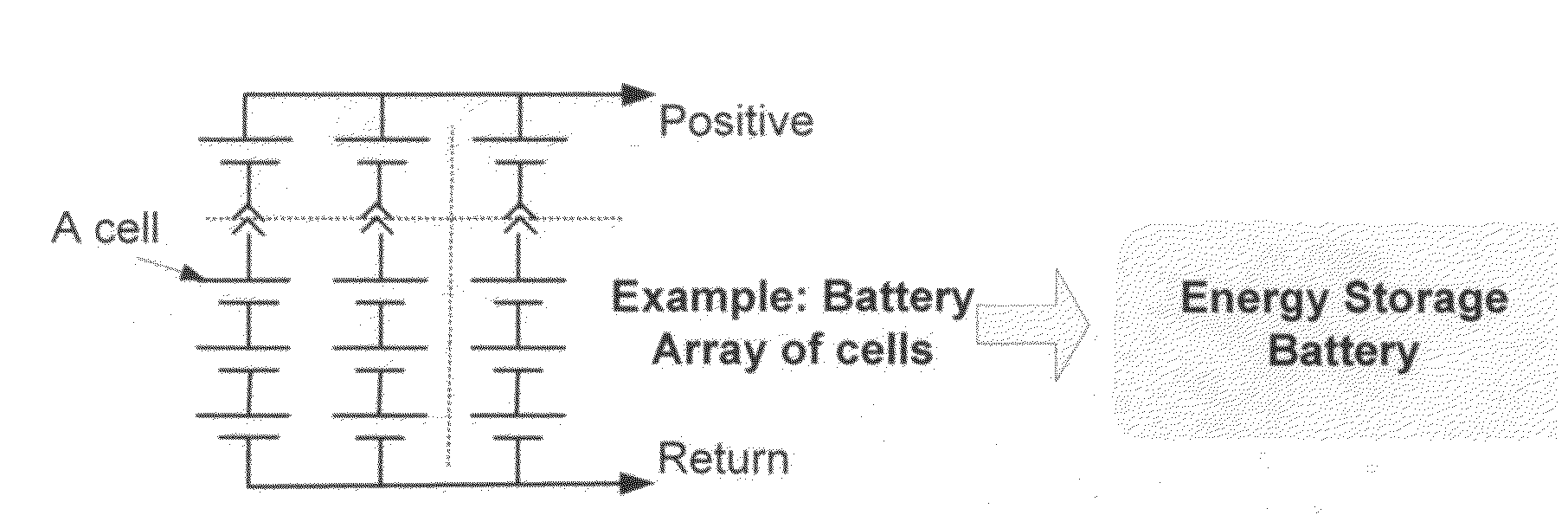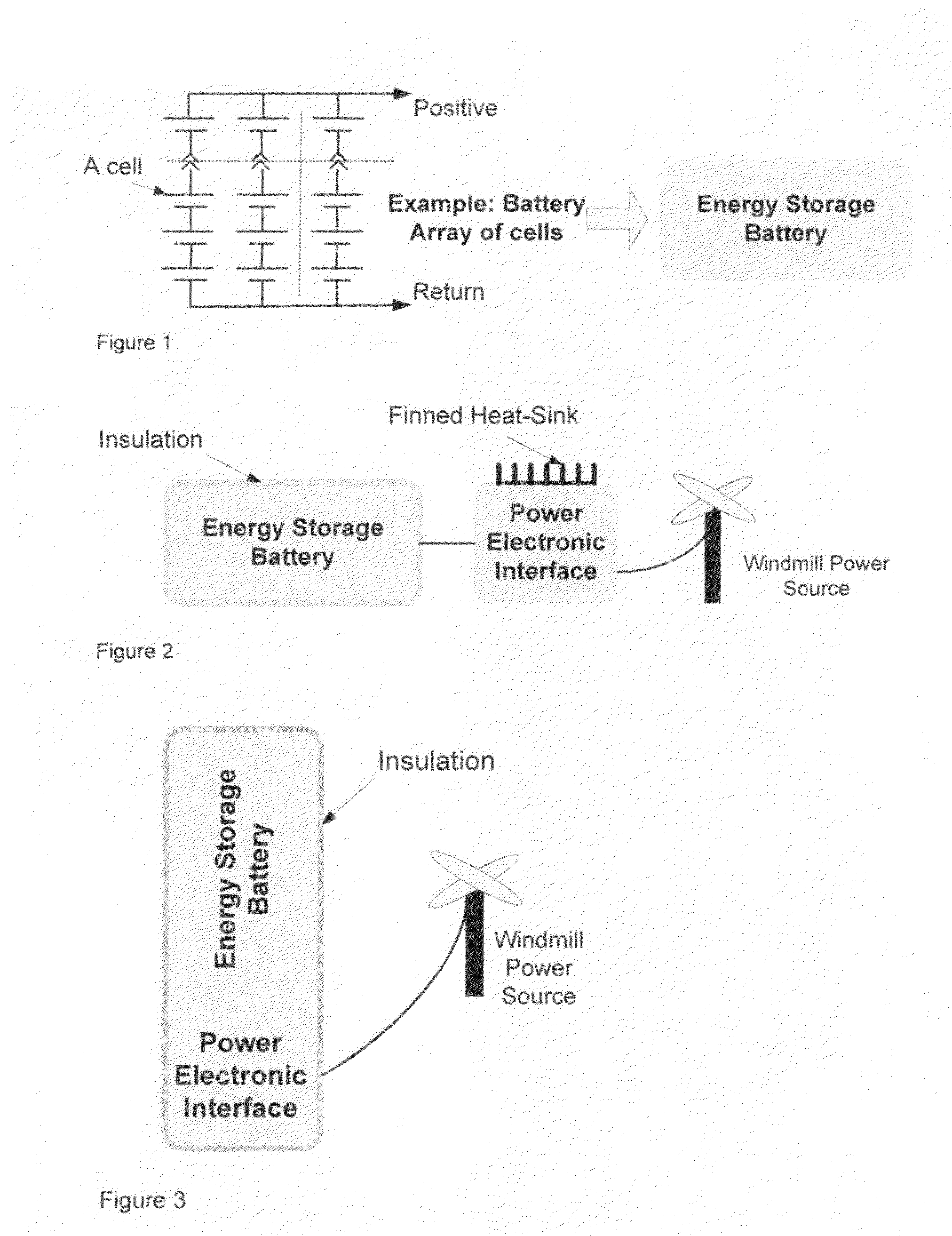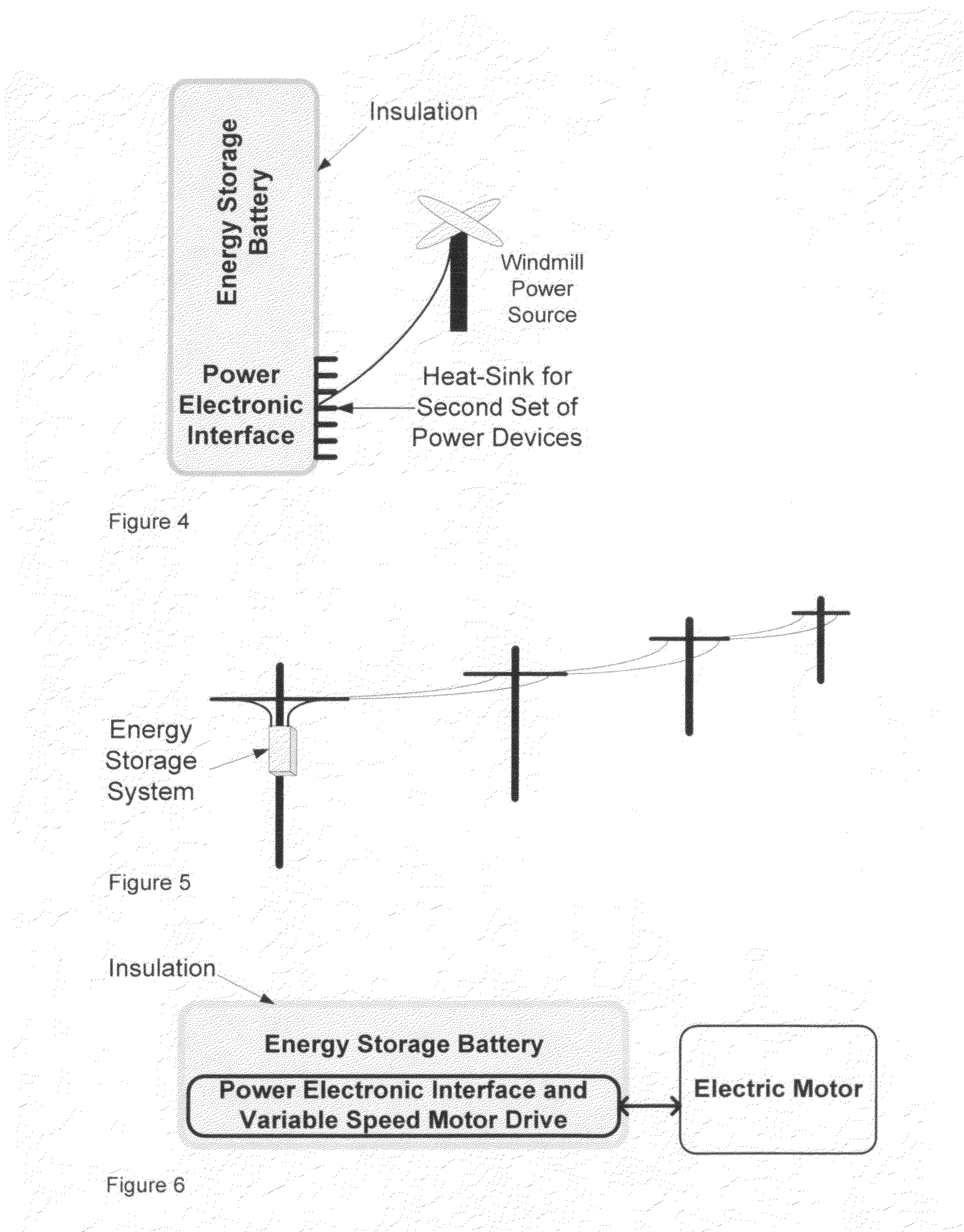Coupling waste heat into batteries
- Summary
- Abstract
- Description
- Claims
- Application Information
AI Technical Summary
Benefits of technology
Problems solved by technology
Method used
Image
Examples
Embodiment Construction
[0031]The present invention provides a means for using the heat created by the power devices in a power electronic interface circuit for the thermal management of the battery in a battery based energy storage system. The present invention is described in the context of sodium-sulfur batteries, but can be applicable to other battery or storage technologies with temperature requirements above the ambient temperature.
[0032]FIG. 1 is a simple illustration that a battery is composed of an array of battery cells. Any voltage or current or combination of voltage and current capability of the battery can be designed by placing battery cells in the array as serial stacks of cell or parallel cells or stacks of cells.
[0033]Previous sodium-sulfur batteries rely on self-heating of the battery, which is generally available only during charge or discharge cycles. Further, the charge or discharge rate is often determined by the requirements of the external power system, and often it is not practica...
PUM
| Property | Measurement | Unit |
|---|---|---|
| Temperature | aaaaa | aaaaa |
| Electrical resistance | aaaaa | aaaaa |
| Speed | aaaaa | aaaaa |
Abstract
Description
Claims
Application Information
 Login to View More
Login to View More - R&D
- Intellectual Property
- Life Sciences
- Materials
- Tech Scout
- Unparalleled Data Quality
- Higher Quality Content
- 60% Fewer Hallucinations
Browse by: Latest US Patents, China's latest patents, Technical Efficacy Thesaurus, Application Domain, Technology Topic, Popular Technical Reports.
© 2025 PatSnap. All rights reserved.Legal|Privacy policy|Modern Slavery Act Transparency Statement|Sitemap|About US| Contact US: help@patsnap.com



